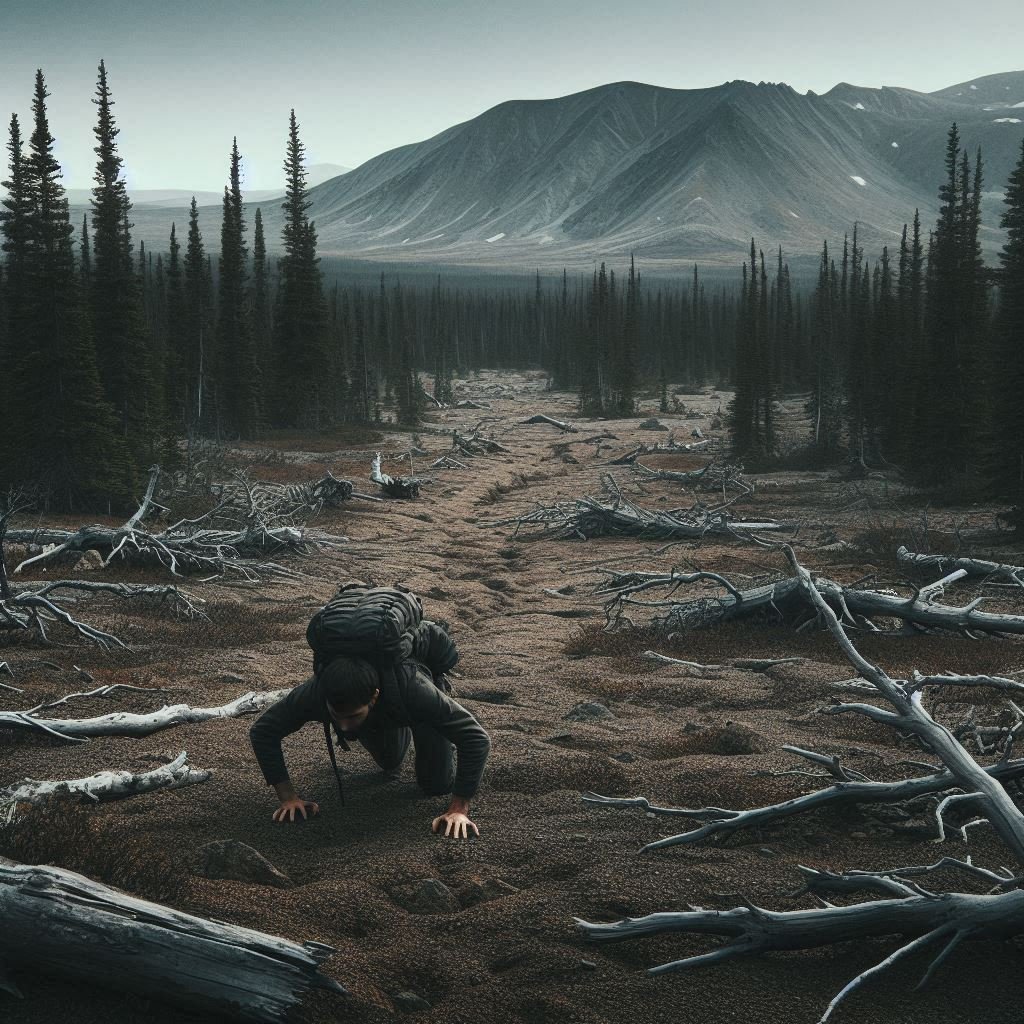Listen to “Hugh Glass” on Spreaker.
Imagine this: you wake up in the middle of the wilderness, your body shredded, your bones broken, your flesh torn open, and you are completely alone. No doctors. No medicine. No rescue team coming to save you. Just you… and the land. Most people would accept death. But Hugh Glass wasn’t most people.
What you’re about to hear is one of the most insane survival stories in history. A tale so brutal and unbelievable that it has lived on for over two centuries. This is the story of Hugh Glass, a frontiersman who was mauled by a bear, left for dead by his companions, and then crawled—yes, crawled—nearly 200 miles through hostile wilderness to survive and take his revenge.
Life on the Edge of the Frontier
Our story begins in the early 1820s. America’s frontier was wild, raw, and unforgiving. This was the age of mountain men, fur trappers, and explorers—hard men who pushed into the wilderness in search of fortune. Hugh Glass was one of them.
He wasn’t a young man anymore, in his early 40s, but he was tough, experienced, and used to danger. Glass joined an expedition led by General William Henry Ashley, who had gathered a group of about 100 trappers—men who would become legends of the American West. They traveled up the Missouri River into territory that was as dangerous as it was untamed.
The land belonged to Native tribes, including the Arikara and the Sioux. The terrain was unforgiving: endless plains, dense forests, and rivers that could sweep a man away in seconds. And then there was the wildlife—wolves, mountain lions, and grizzly bears. Every day was a gamble. But Glass was not afraid.
The Bear Attack
It happened in August of 1823. Hugh Glass was out scouting for game near the Grand River in what is today South Dakota. He spotted a stream and decided to follow it. That’s when he stumbled upon a grizzly bear and her cubs.
Now, there are few things on Earth more dangerous than a mother grizzly with her cubs. Before Glass could even react, the bear charged.
What followed was sheer horror. The bear hit him like a freight train, knocking him down. She tore into his back with her claws, breaking ribs. Her jaws clamped down on his leg, shaking him like a rag doll. Glass fought back with his knife and musket, but the bear was relentless.
By the time his companions reached him, Glass was unrecognizable. His scalp was hanging loose. His throat was torn open. His leg was mangled. The men managed to kill the bear, but they were sure Hugh Glass was finished. No man could survive wounds like that.
Left for Dead
The expedition was deep in enemy territory. They couldn’t afford to carry a dying man for miles through dangerous land. But they also didn’t want to abandon him outright. So the leader, Ashley, asked for volunteers to stay with Glass until he passed.
Two men stepped forward: John Fitzgerald, a seasoned trapper, and a young man named Jim Bridger, who was only 19 at the time but would later become one of the greatest frontiersmen in American history.
For a couple of days, Fitzgerald and Bridger watched over Glass. They tried to comfort him, but his condition seemed hopeless. The expedition was moving on, and danger was everywhere. Finally, Fitzgerald convinced Bridger that they had no choice.
They dug a shallow grave, laid Hugh Glass beside it, took his rifle, knife, and gear, and left him to die.
The Awakening
But Hugh Glass didn’t die. Days later, he opened his eyes. He was alone, in the middle of the wilderness, with no weapons, no food, and no friends. His body was broken. He couldn’t walk. But his mind was sharp.
And he was angry.
Glass realized two things: if he stayed where he was, he would die. And if he was going to die, he was at least going to try to live long enough to take revenge on the men who abandoned him.
So he began to crawl.
The Crawl to Survival
Think about that for a moment. Hugh Glass was 200 miles from the nearest outpost. His leg was shattered. His ribs were broken. He could barely breathe. But inch by inch, he dragged himself across the ground.
He survived on whatever he could find—berries, roots, even insects. At one point, he came across a rotting bison carcass and scooped out the maggots to eat. Disgusting? Yes. But it kept him alive.
To keep his wounds from festering, Glass used what nature gave him. He found maggots crawling in his open wounds and let them eat away the dead flesh, preventing gangrene. It was grotesque, but it worked.
For weeks, he crawled and staggered, moving slowly toward civilization. Every day was agony. Every moment was a fight against death. But somehow, through sheer willpower, he kept going.
A Stroke of Luck
After weeks of suffering, Glass stumbled across a group of Lakota Sioux hunters. They were shocked by his condition, but instead of killing him, they took pity on him. They carried him to their village, nursed his wounds, and gave him food.
Thanks to their care, Glass regained some strength. Eventually, he was able to walk again—limping, scarred, but alive. He borrowed a canoe and made his way downriver to Fort Kiowa, a trading post.
By the time he arrived, Hugh Glass had traveled nearly 200 miles. Against all odds, he had survived.
The Hunt for Revenge
Now came the part that kept Hugh Glass alive through all that suffering—revenge.
He wanted Fitzgerald and Bridger. He wanted them to pay for leaving him to die. Armed once again, Glass set out to track them down.
He found Jim Bridger first. But when he confronted him, Glass saw that Bridger was just a kid, barely a man, terrified and guilty. Glass’s rage melted. He spared Bridger’s life.
Fitzgerald, however, was another story. Glass eventually tracked him to a military outpost. But when he confronted him, he discovered Fitzgerald had joined the U.S. Army. Killing him would mean execution.
So instead, Glass let him live—but not before warning him that if they ever crossed paths again, Fitzgerald would pay with his life.
The Legend Lives On
Hugh Glass went on to continue his life as a trapper and frontiersman. He survived countless more dangers until, years later, he was killed in battle with Native warriors.
But his story lived on. Over time, it became legend. Writers exaggerated details, movies dramatized it, and in 2015, Leonardo DiCaprio brought it to the big screen in The Revenant. But even stripped of Hollywood flair, the real story is almost beyond belief.
A man, shredded by a bear, abandoned by his companions, crawled and limped 200 miles through hostile wilderness, fueled only by rage and the will to live.
Why We Remember
Hugh Glass’s survival is more than just a story of revenge. It’s about the human spirit—the refusal to give up even when every possible force is against you.
Most of us will never face anything like what Glass endured. But his story reminds us of something chilling and inspiring at the same time: sometimes, survival isn’t about strength or weapons or luck. Sometimes, it’s about sheer, stubborn will.
Hugh Glass should have died in the wilderness in 1823. Instead, he became a legend.




